Aer Day Sling 3 Review
Aer switches up the internal organization for the Day Sling 3, upgrading the main compartment’s pocket count at the cost of a now-plain front pocket.
Our Verdict
Save time. Get access to brief summaries of our reviews so you can browse and make decisions more efficiently.
Pros
- Able to stand thanks to its flat base
- Well-rounded organization
- Solid build quality throughout
Cons
- No front pocket organization
- Non-removable main strap dangles when carrying the sling by the handle
- Magnetic Fidlock buckle can disengage (though rarely)
Technical Details
-
Capacity
3l
-
Weight (lb)
0.8 lb (0.4 kg)
-
Dimensions
11.5 in x 6 in x 3 in (29.2 x 15.2 x 7.6 cm)
-
Notable Materials
CORDURA® Ballistic Nylon, YKK Zippers, Duraflex Hardware, FIDLOCK Hardware, X-Pac, CORDURA® Nylon
-
Manufacturing Country
China
-
Warranty Information
Full Review
Get up to 10% off Aer • Join Pack Hacker Pro
Whenever Aer iterates on one of their products, we’re always psyched to see the changes they’ve made. Some features get cut out, others are new, and some are brought back after being previously removed—it’s a good indicator that the brand really does try and see what works and what doesn’t. In the case of the Day Sling 3, they’ve seemingly addressed two of the three cons we had with the Day Sling 2. Mind you, it’s not like the Day Sling 2 wasn’t already a capable sling despite its shortcomings.
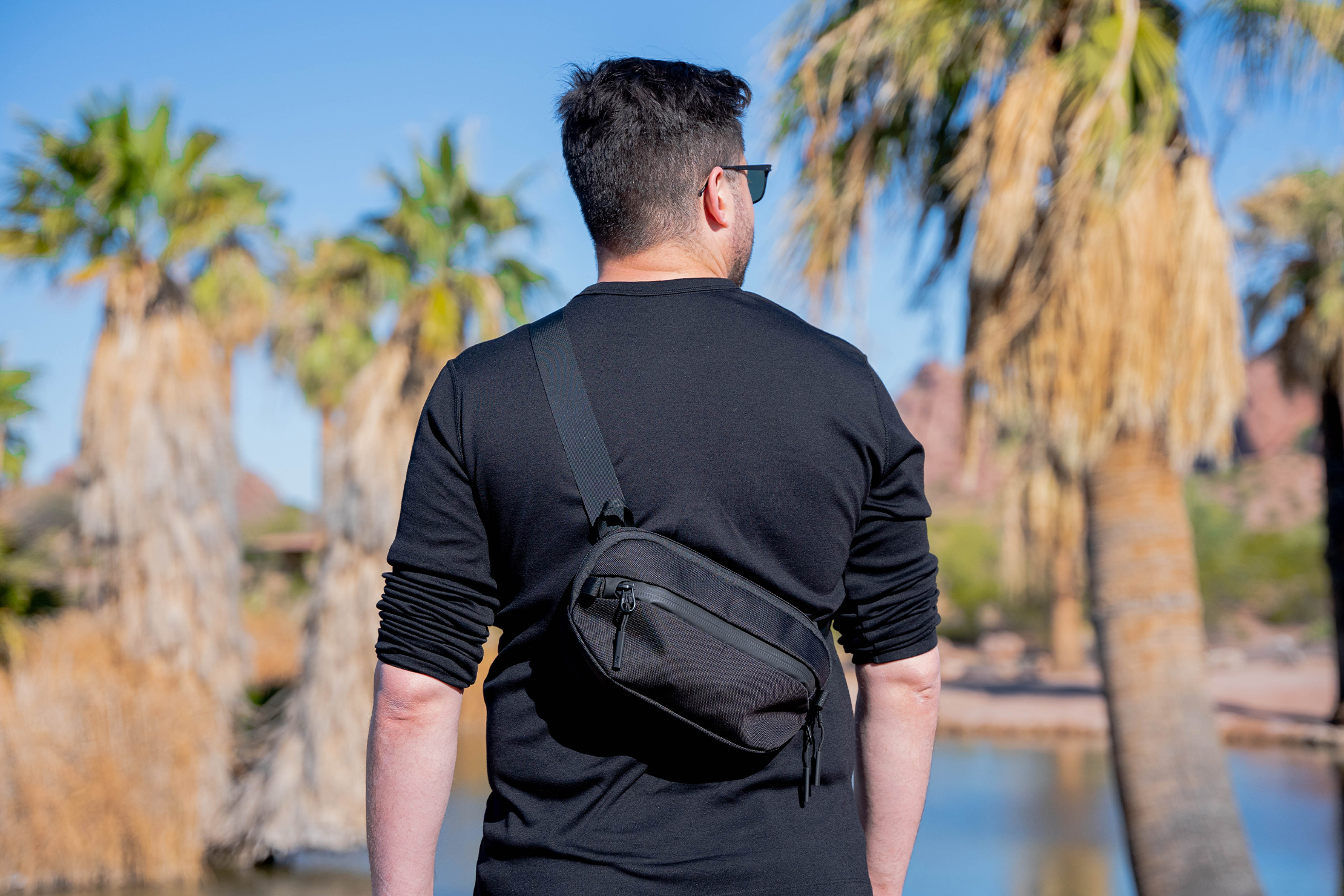
The internal organization has been re-tweaked, and the key clip is no longer the flimsy-feeling plastic one we didn’t like. Also new to the Day Sling 3 is the introduction of a magnetic Fidlock buckle—yes, this one is always a point of contention for us. However, a magnetic buckle alone doesn’t stop the Day Sling 3 from being a leap in improvement over its predecessor. Not all of these improvements are immediately obvious, so let’s get into it.
Materials & Aesthetic
Consistency is the key to keeping things recognizable despite all the tweaks you’re making under the hood. While some telltale signs differentiate the Day Sling 3 from its predecessor, there’s no doubt that this is an Aer product. You’ve got the usual styling cues of black-on-black fabrics and materials, a front that’s bisected by a zippered opening, and a well-defined pill-like shape that fits in any urban landscape—especially at night.
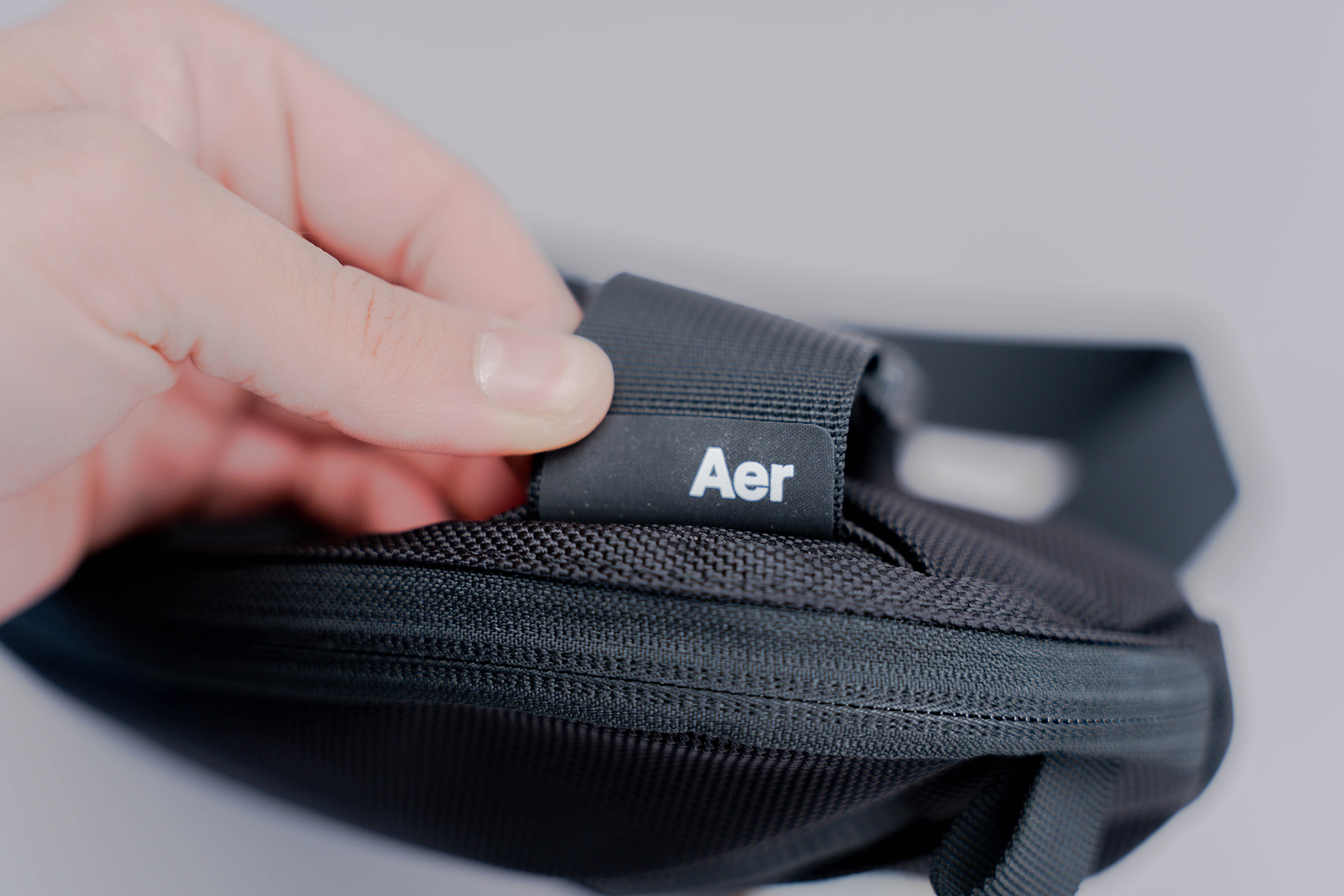
The Day Sling 3 appears more rounded than the Day Sling 2, but it hasn’t lost any of the structuredness we’ve come to associate with Aer’s gear. The main fabric is still 1680D CORDURA Ballistic Nylon, which is the brand’s fabric of choice for practically all their gear at this point, and for a good reason. A heavy denier not only feels more structured but is also more resistant to abrasion. We wouldn’t recommend dragging it across the pavement or anything, but it’s reassuring to know that you can lay it there without too much worry.
When it comes to colorways, the only other available choices at the time of writing are X-Pac or Heathered Gray. Okay, they’re both still just different shades of black, but X-Pac’s unique pattern and water-resistant properties make it a good alternative to ballistic nylon. Alternatively, Heathered Gray’s 700D CORDURA feels less rigid than the other two and is arguably more eye-catching. All of that said, if you’re hoping for more colorful options like what Bellroy or Patagonia offer, the Day Sling 3 isn’t the place to look.
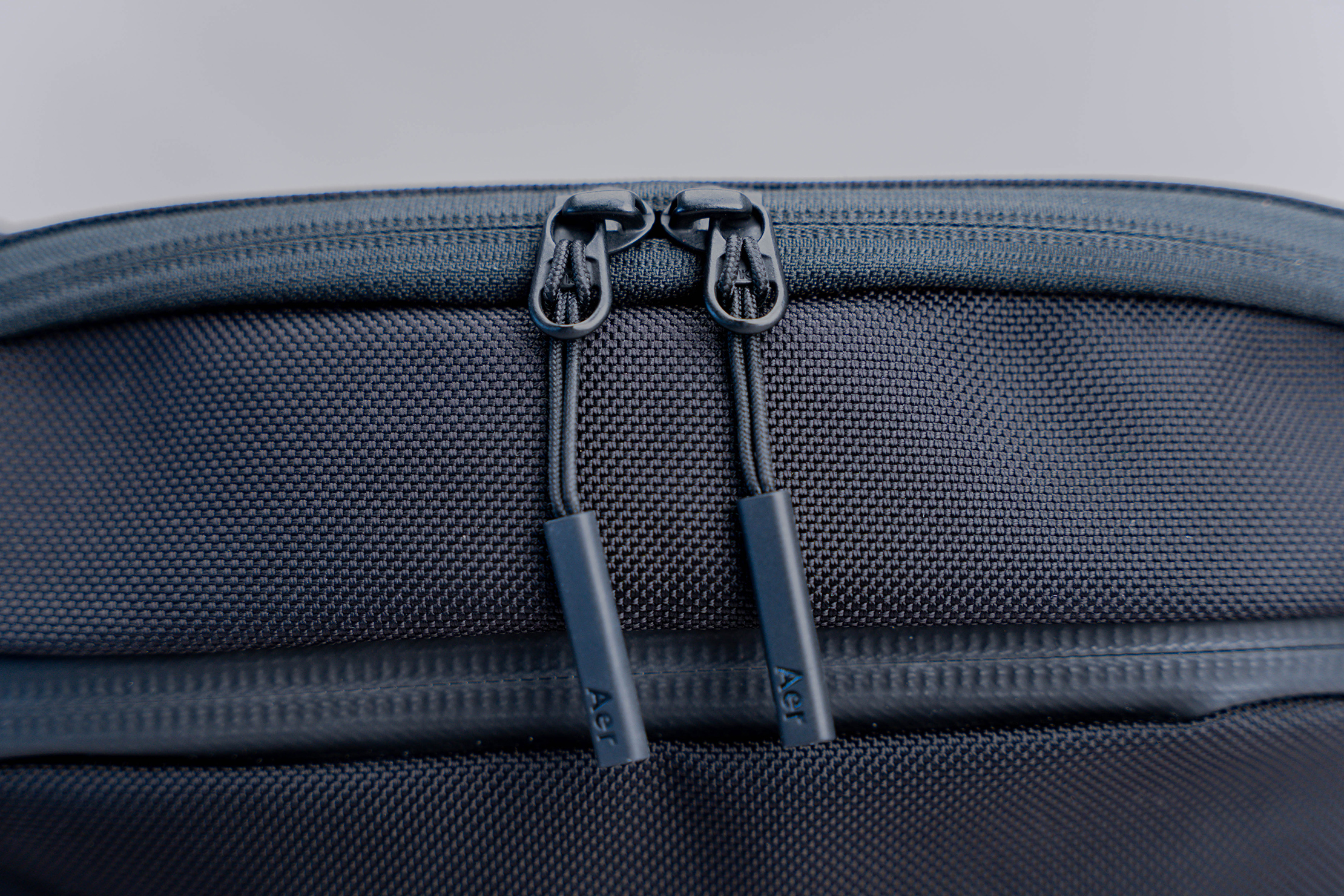
In terms of construction quality, the Day Sling 3 builds upon the Day Sling 2’s already solid foundation. Everything feels high-quality, from the fabric down to the zipper pulls. One of the major complaints we’ve had with the Day Sling 2 is that its key clip feels plasticky. This time around, Aer’s stepped up the hardware, and now it’s a proper carabiner-style clip with a metal gate. The zippers are non-jingly, even more so here because the front pocket now has one less. However, we’ve heard reports that these YKK AquaGuard zippers have cracking issues, particularly around the zipper track’s material. On the other hand, we ourselves have not seen this happen with any of our gear that features AquaGuard zippers.
One of the most noteworthy additions to the Day Sling 3 is the magnetic Fidlock buckle. We more often than not prefer side release buckles over magnetic ones—whether it’s a sternum, compression, or other kinds of straps—because they’re more secure. However, if you’re going to have a magnetic buckle, Fidlock’s are pretty much the gold standard, and they do the job well.
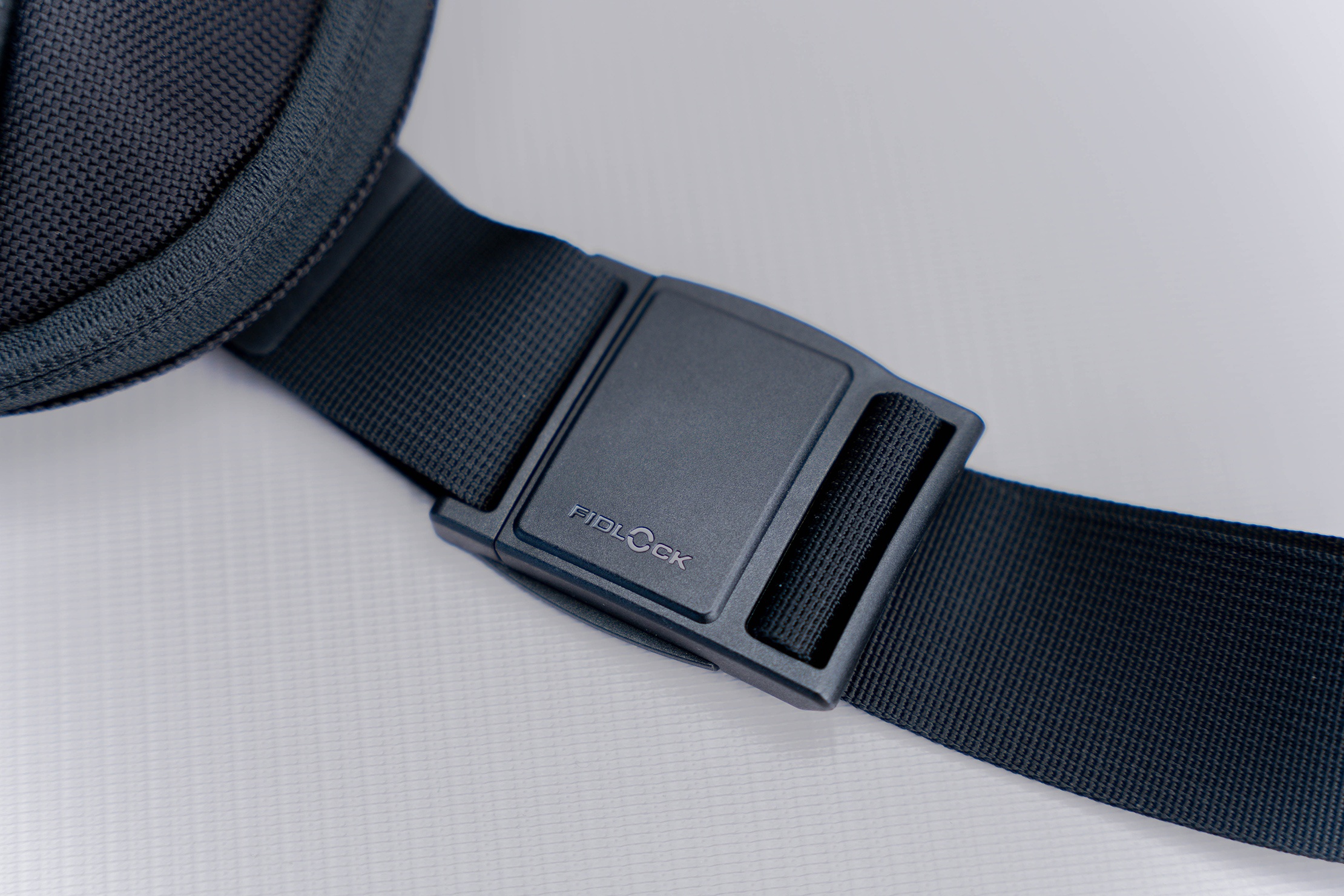
The Day Sling 3 looks and feels overall sleek—sleeker than the Day Sling 2, in our opinion. The changes in the aesthetic department are few and subtle, but they’re courtesy of adjustments to the bag’s functionality. In other words, Aer takes the function over form approach here—and that’s something that we can definitely get behind.
External Components
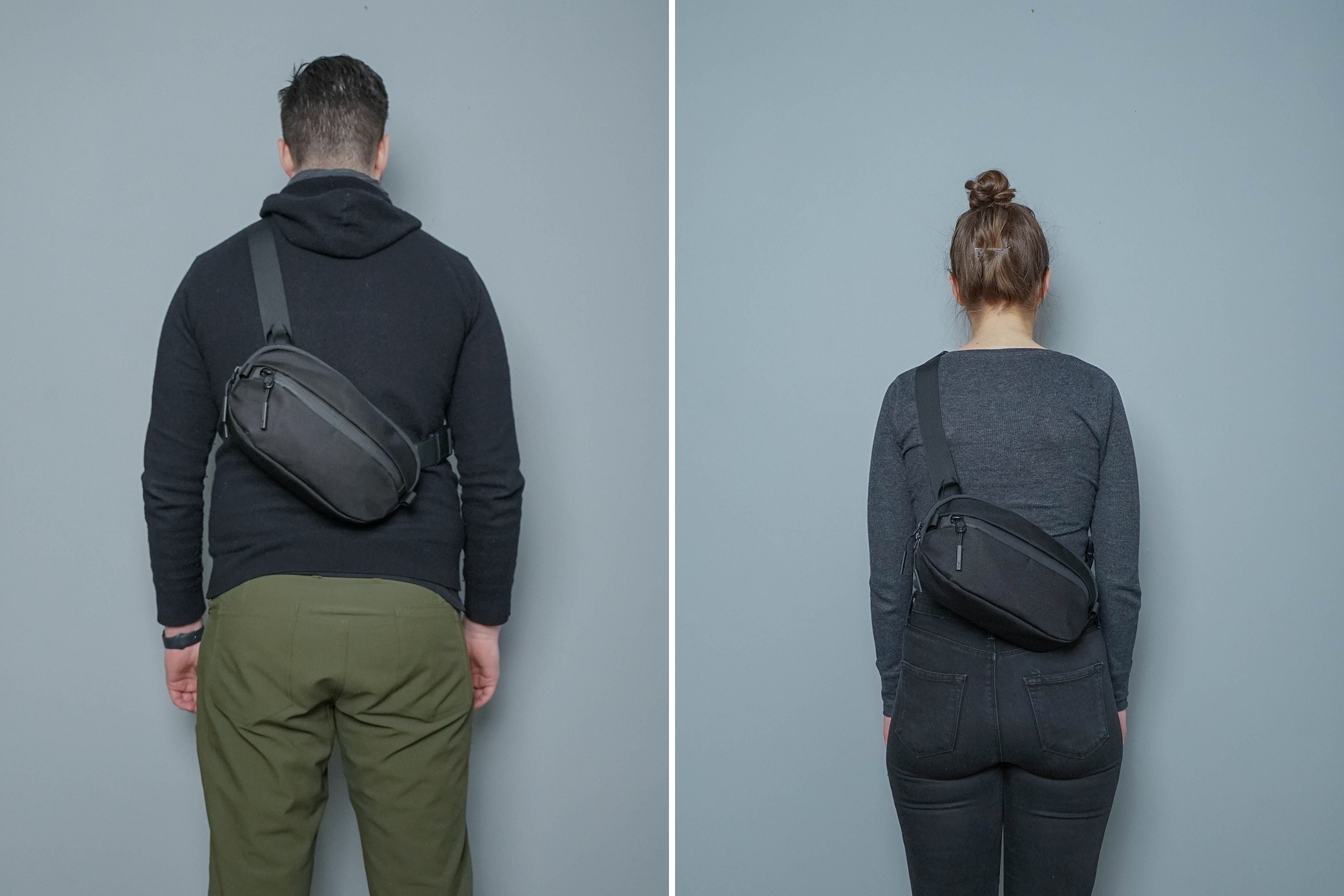
The strap on the Day Sling 3 is simple and easy to operate. Adjust the length through a single adjuster that’s anchored to the Fidlock buckle on one end. This means there’s no pesky slack that flails around in the wind that you have to manage and, therefore, fewer distractions while you’re moving.
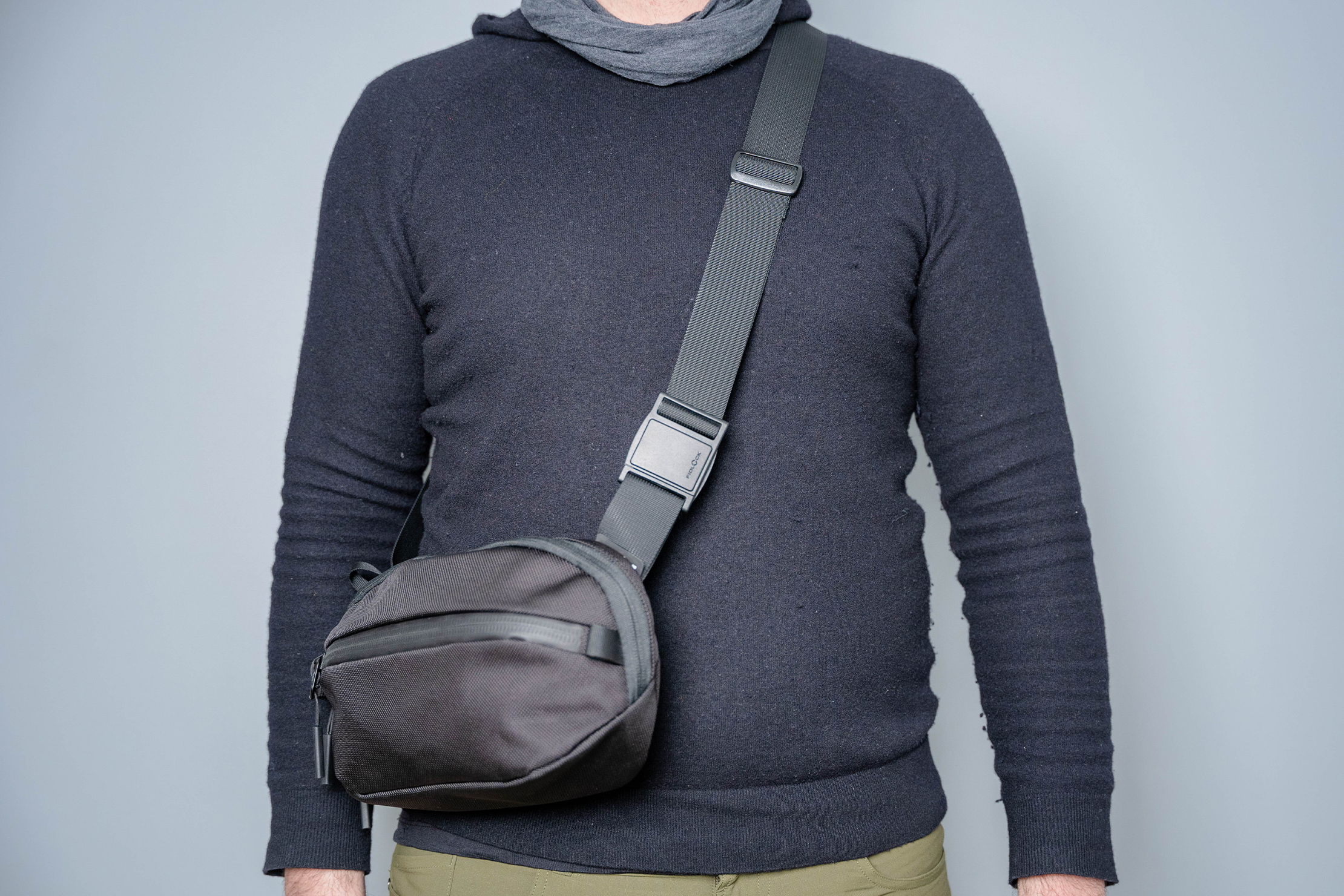
On the subject of that Fidlock buckle, it’s still positioned near the sling itself, off to one side. Some slings place it closer to the center of the strap, but we don’t mind this more biased positioning because it’s more comfortable to wear in tandem with a backpack since it doesn’t fall against your spine. In any case, it still works as a means of quickly getting the sling off. In scenarios where you’re wearing the sling and another bag, straps often overlap each other and get tangled, so having a quick-release buckle is a convenient solution.
That said, we’re still skeptical about the use of a magnetic buckle. Technically, there’s nothing wrong with it. It feels secure when we’re wearing it, and it’s just as easy, if not easier, to unclasp versus a more typical side-release buckle. However, there are rare instances where the buckle can disengage if the strap is pulled in two different directions, at a specific angle, and on each side of the Fidlock. It’s a fairly minor issue given the unlikely odds of it happening, but it’s an issue we did not encounter with the Day Sling 2’s reliable side release buckle.

We found in testing that the most optimal way to carry the Day Sling 3 in day-to-day use is to have it at the side, crossbody-style. This pack rests at the hip, where its weight naturally anchors it down. It’s not quite a tight fit, and if that’s what you need, shifting the pack to the front or to the back and tightening the strap is also an option. We use this mode for bike rides or when rushing through the airport, but we still prefer the side carry for daily use because it feels more relaxed.
The strap itself is appropriately wide, with enough area to distribute the weight of a fully-packed main compartment. It’s permanently attached to the back of the sling, stitched diagonally. There are no fancy swivels or removable clips here, so we’re happy to see that Aer got the fit and comfort just right with this permanent setup.
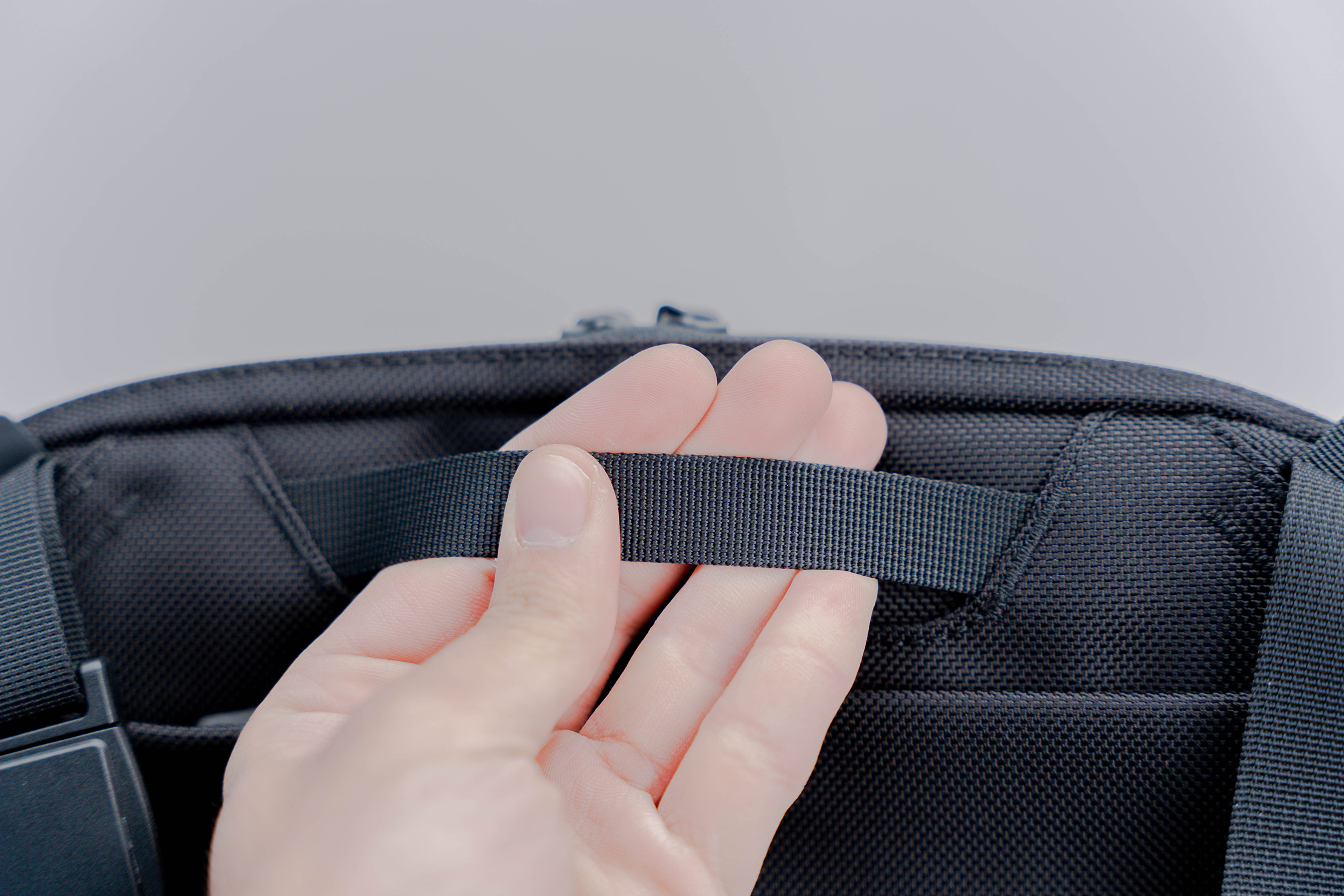
Alternatively, if you get tired of shoulder-carrying the Day Sling 3, there is also a handle. It’s a thin nylon strap located along the top edge at the back. Because it’s thin and low-profile, it stays out of the way and doesn’t spoil the sling’s sleek profile. It’s not the most comfortable or balanced handle for long-term carrying, but the cons are by no means deal-breakers for quick-grab situations. Take note that since the main strap is non-removable, it just dangles around when you carry the sling by the handle. As a workaround, stuffing the strap in the rear pocket is an option, though not a very elegant one.
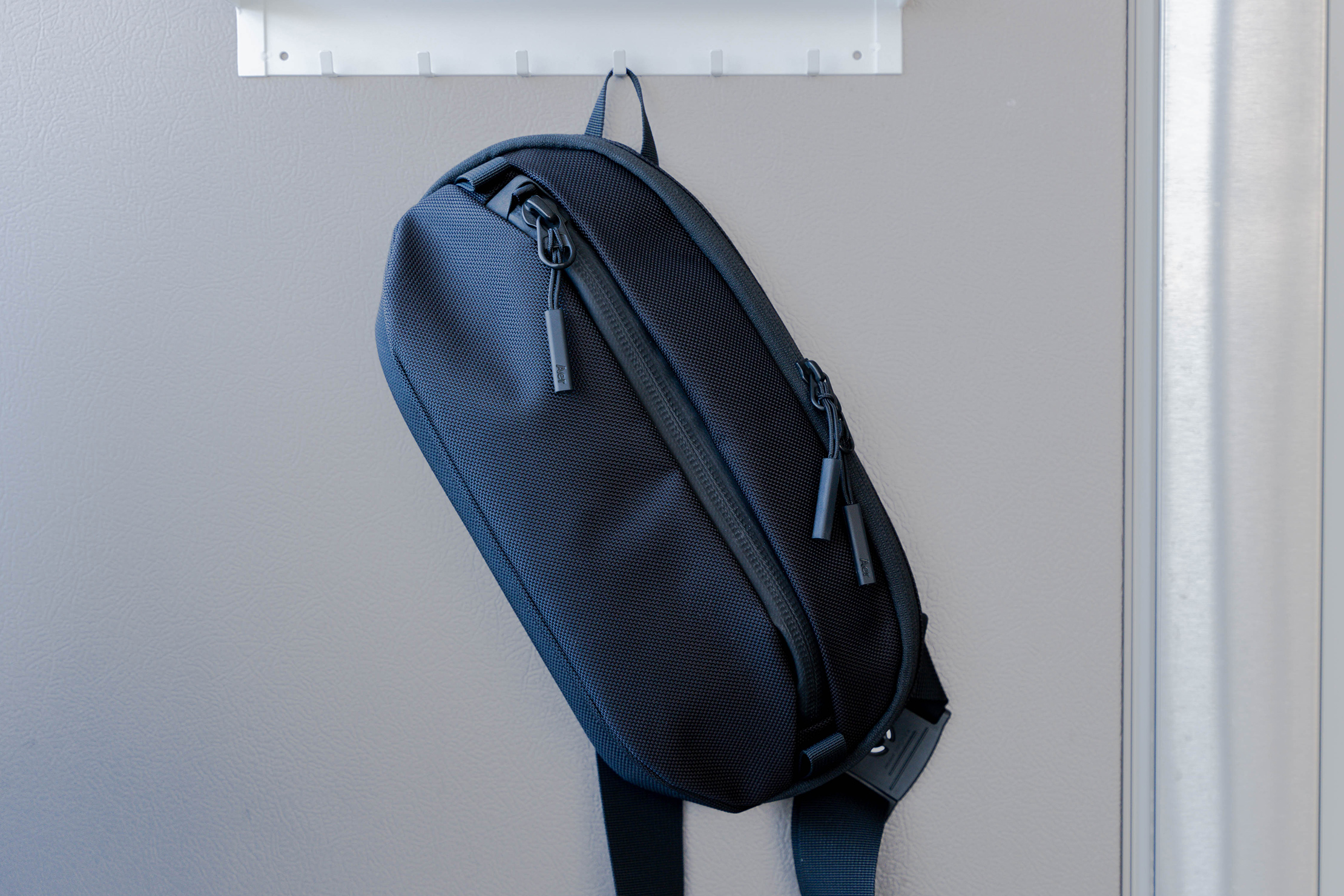
Lastly, there’s also the top corner nylon loop, a carry-over feature from the Day Sling 2. It’s also a feature found on the Slim Pouch. Whichever way you want to trace this particular genetic trait, it serves the same purpose: a handy way to hang the sling beside your desk, on a chair, or a coat hanger. Additionally, there are nylon loops flanking the front pocket’s opening, and all three loops can be used to hang accessories like keychains.
Inside The Sling
The front compartment’s opening runs across the entire length of the Day Sling 3. The key change from the Day Sling 2 is that the opening now only features one zipper instead of two. To offset the loss, the end of the opening has a garage for the zipper that completes the seal when it’s closed. It’s a clever move by Aer that eliminates an extra zipper and cleans up the looks—feeding two birds with one scone.
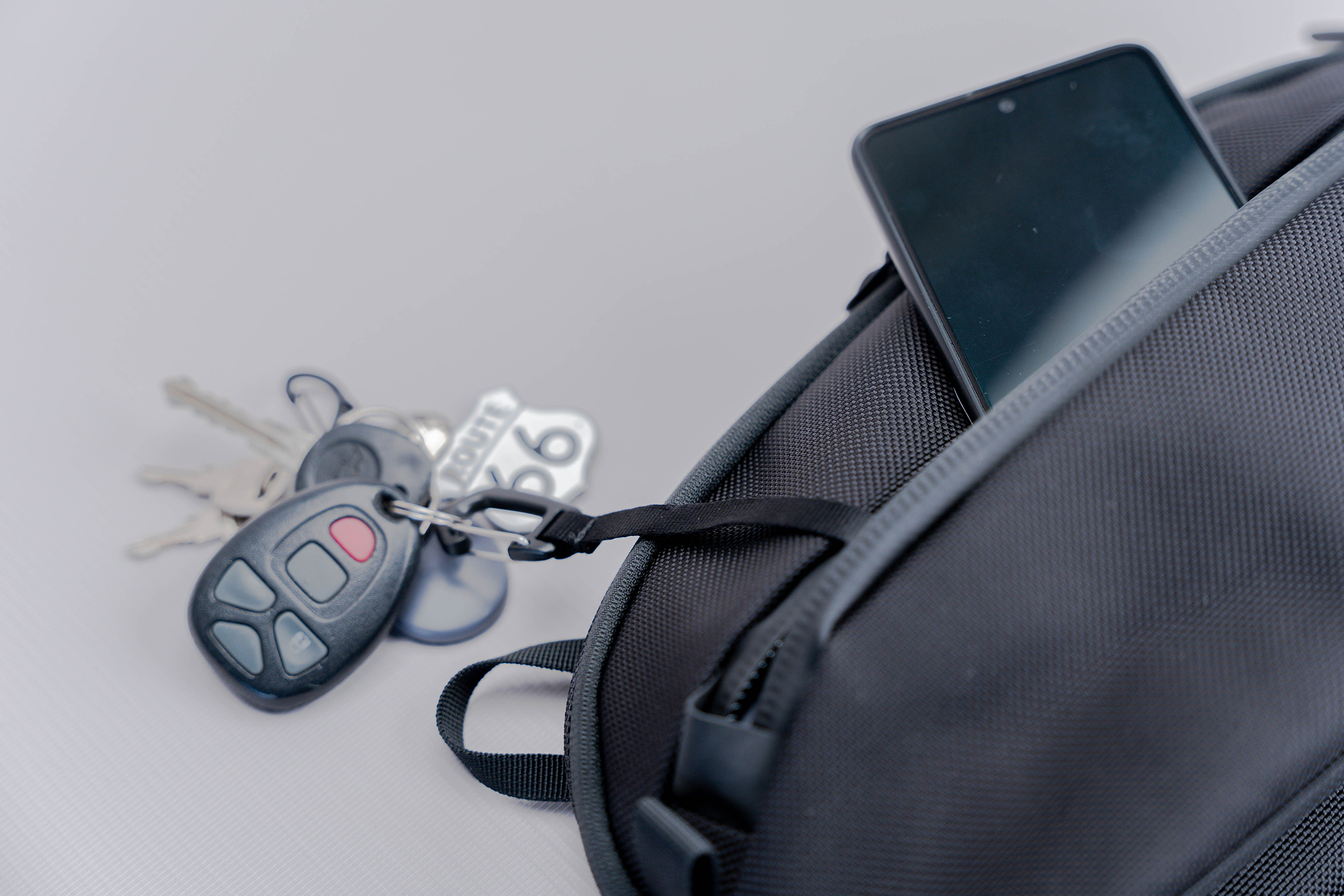
Most of the compartment’s space is in the lower half of the sling. There’s no headroom hidden underneath the upper half, but luckily there’s enough space that there’s no need for it. If you’re coming from the Day Sling 2, you might be disappointed to find that the two stretchy pockets inside here are now gone. Instead, the front compartment is just a dump pocket.
The only means of organization here is the built-in key strap, which is long enough to reach doorknobs when the sling’s worn at the front. As mentioned earlier, the most notable upgrade here is the carabiner-style clip it now uses. It feels a lot more robust, and we’re more than confident putting our keys here than on the plasticky clip of the Day Sling 2.
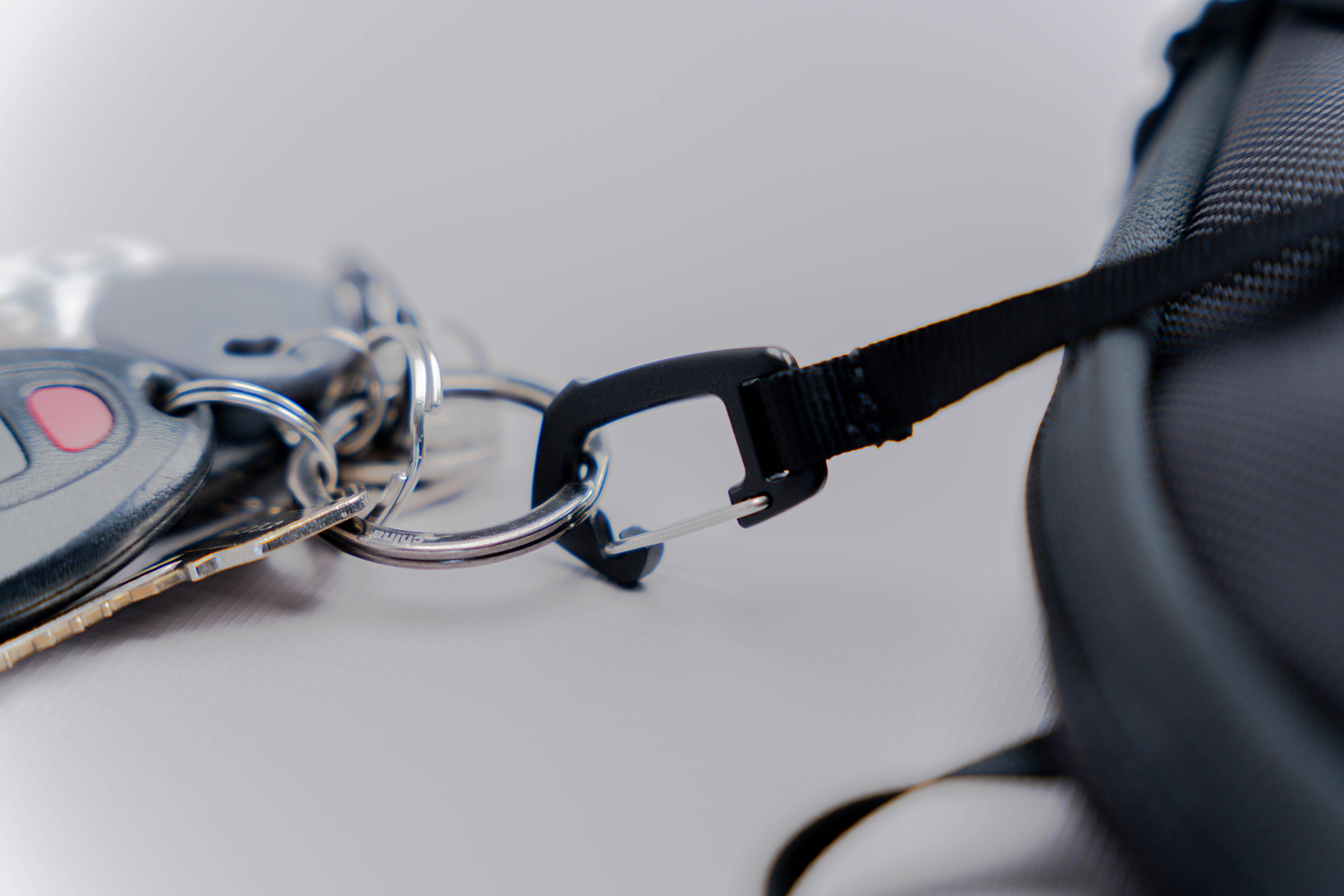
There’s also a stealthy pocket at the back for items that need to be extra secure (like a passport, travel documents, and important IDs). It’s well-hidden by a gusset that shrouds the opening. Aer even went as far as to use a Hypalon zipper pull instead of its usual metal and cord pull to keep things low-profile.
Space inside the pocket is mostly limited to very slim items like those mentioned above. For context, our passport and Field Notes Notebook fit inside the pocket sideways. There’s a small amount of headroom since the pocket is located just below the sling’s handle. For the most part, though, items bulkier than a smartphone are best left inside either the front or main compartment.
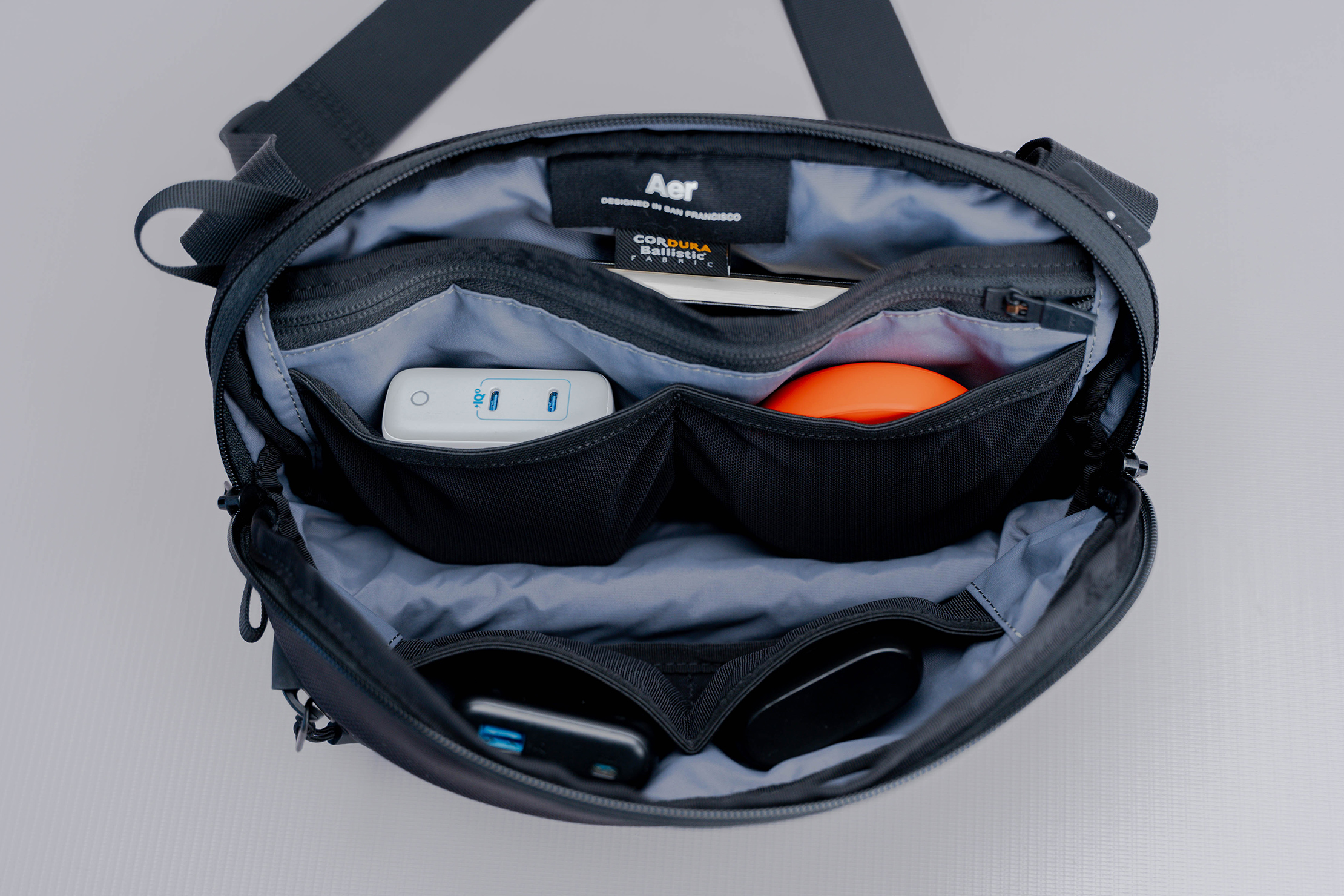
The main compartment has a horseshoe-style opening that goes about two-thirds of the way down the sides. It’s a wide opening, made more convenient by the Day Sling 3’s ability to stand up. This makes sorting through the interior much easier since we don’t have to prop up the sling while going through items inside. It’s the same reason why we’re fans of standing pouches.
Courtesy of the sling’s flat base is an equally generous amount of floor space inside the main compartment. There’s enough room for something like a compressible jacket or a super beefy power bank. If, however, that space isn’t needed, the Day Sling 3 can compress because the floor has a gusseted design that folds in. The result is that the bag’s interior space feels more maximized and flexible compared to the Day Sling 2’s—and that’s despite the decrease in rated capacity (4.5L for the Day Sling 2, 3L for the Day Sling 3).
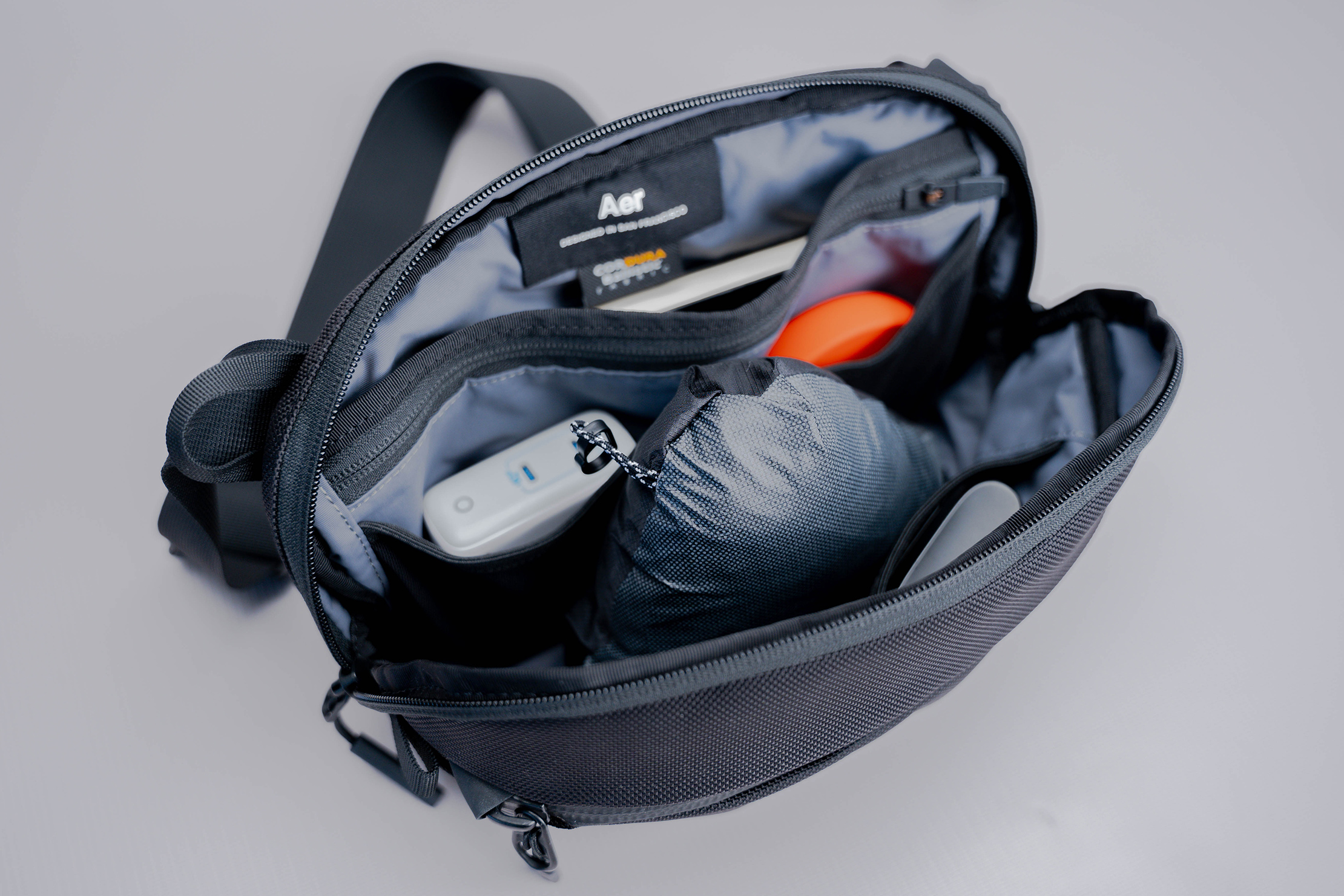
For smaller items, though, the main compartment has a lot of smaller pockets to keep things organized. If you’re disappointed that there are no longer pockets in the front compartment, you’ll be happy to know that the main compartment gained two—it seems they just changed addresses.
The interior layout of the main compartment largely carries over from the Day Sling 2. On the front side are the two aforementioned new mesh pockets, and right across are two larger mesh pockets stacked in front of a zippered compartment. The zippered pocket acts as a divider for the rear device sleeve that can fit an iPad Mini or a Nintendo Switch. If you are bringing either of those two devices, the mesh pockets are good storage spaces to put accessories. We use them for extras like dongles, thumb drives, a pair of wireless earphones, or for one of our compact chargers like the Anker Nano II.
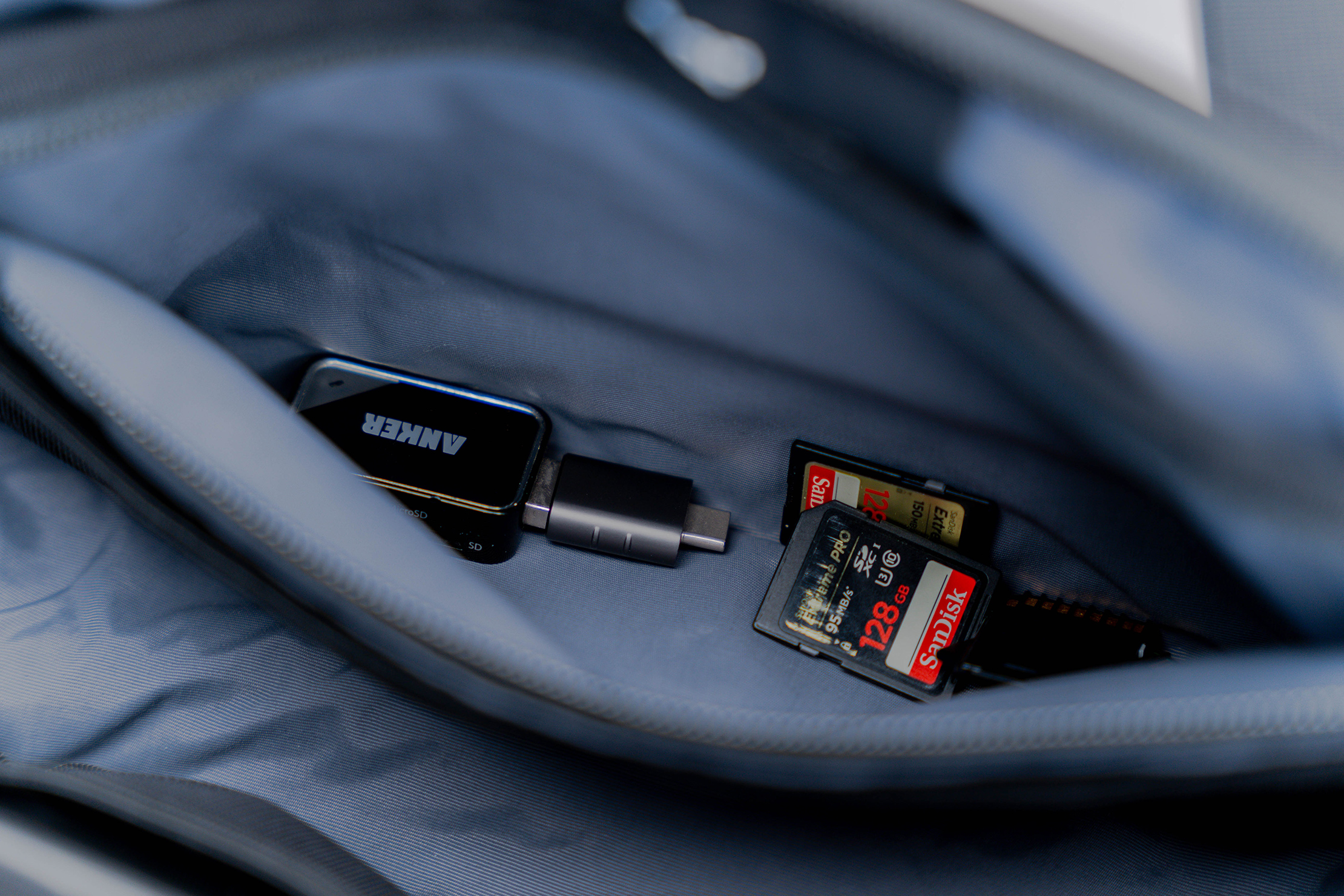
Pocket variety is, on the whole, quite good, not leaving us wanting for more, with maybe the exception of a dedicated smart tracker pocket. We use an Apple AirTag in most of our bags for security purposes. Seeing how Aer implemented a dedicated smart tracker pocket in the Travel Pack 3 makes us wish there was one in the Day Sling 3 as well.
The lack of it is not a deal-breaker by any means, and we have workarounds for it. We typically placed our AirTag inside the zippered compartment. Alternatively, we can sort of squeeze it inside the narrow tag, but this is a less-than-ideal solution. For now, we’re more confident using the tag as a pen loop, but perhaps one of Tile’s boxier smart trackers will fit better here.
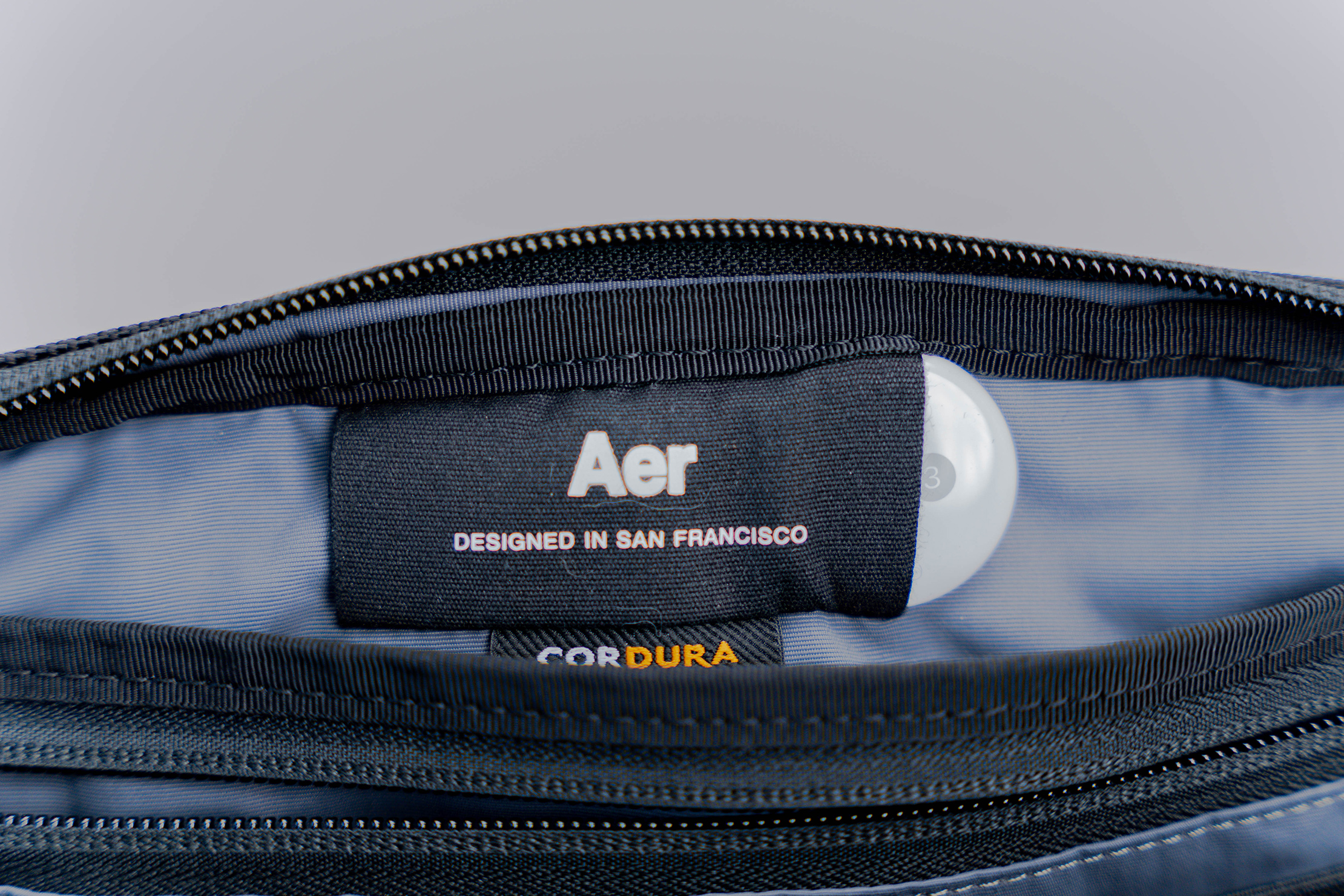
We like experimenting with travel hacks like that, but the Day Sling 3 doesn’t really need the extra thought-processing. Everything feels thoughtfully laid out, functional, and not lacking in most respects. Accessibility gets a boost thanks to its standing feature—a feature that easily flies under that radar, but one that we certainly appreciate. While we don’t find the use of a magnetic buckle necessarily agreeable, we understand the extra convenience it brings (plus, magnets are satisfying to use, after all). It’s a refinement of an already-proven product and a well-executed one at that.
Check out this video for the perfect way to pack this sling for any trip. Unlock access to our entire catalog of Pro Exclusive Videos when you sign up for Pro.

Usage Timeline
Condition: Excellent
- There’s now a magnetic Fidlock buckle for the harness
- Internal layout is similar to the previous version
- Also appears more round than the previous one
Condition: Excellent
- Nice that the sling can stand on its own due to the construction
- Magnetic Fidlock buckle became disengaged—not while wearing, but when the strap was caught on something while picking up the sling
- Excellent organization consideration inside—great for segmenting smaller pieces of gear
- Large in surface area, but low profile
- Great versatility—you can wear it close to your chest or down by your hip
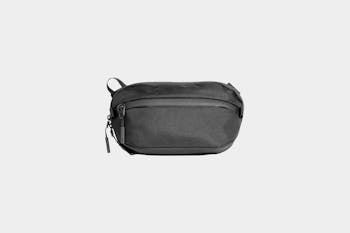
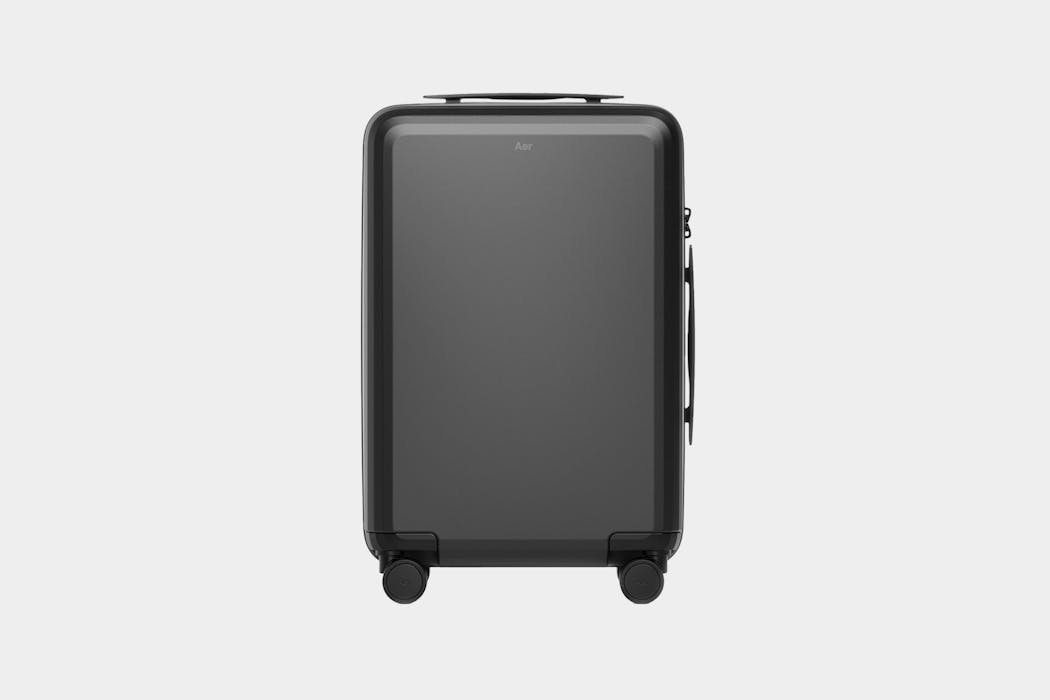
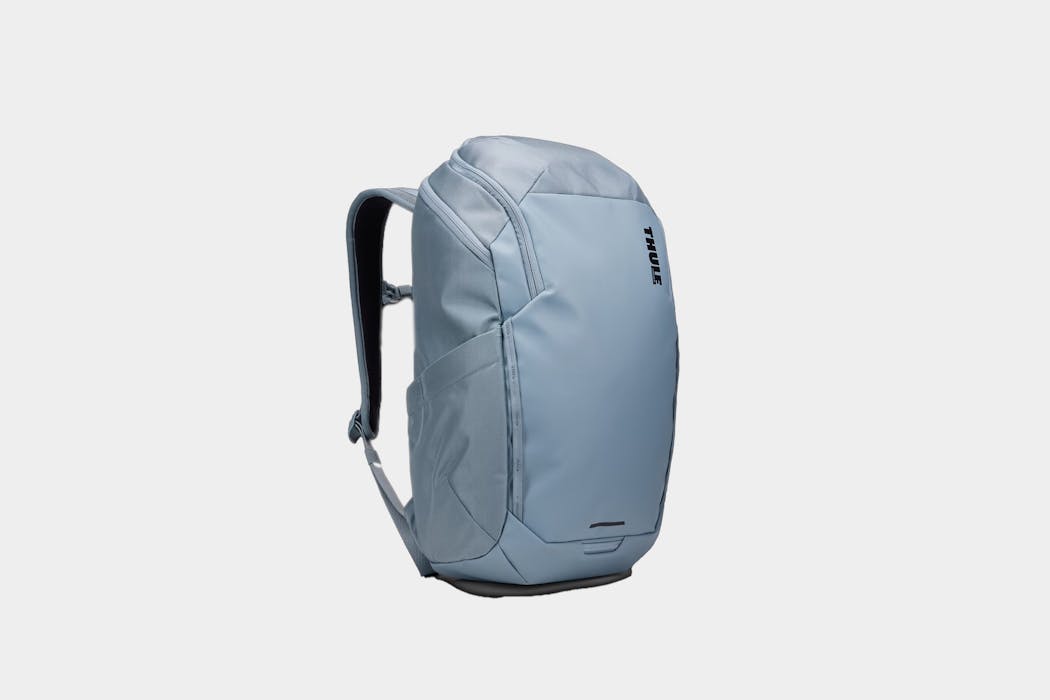
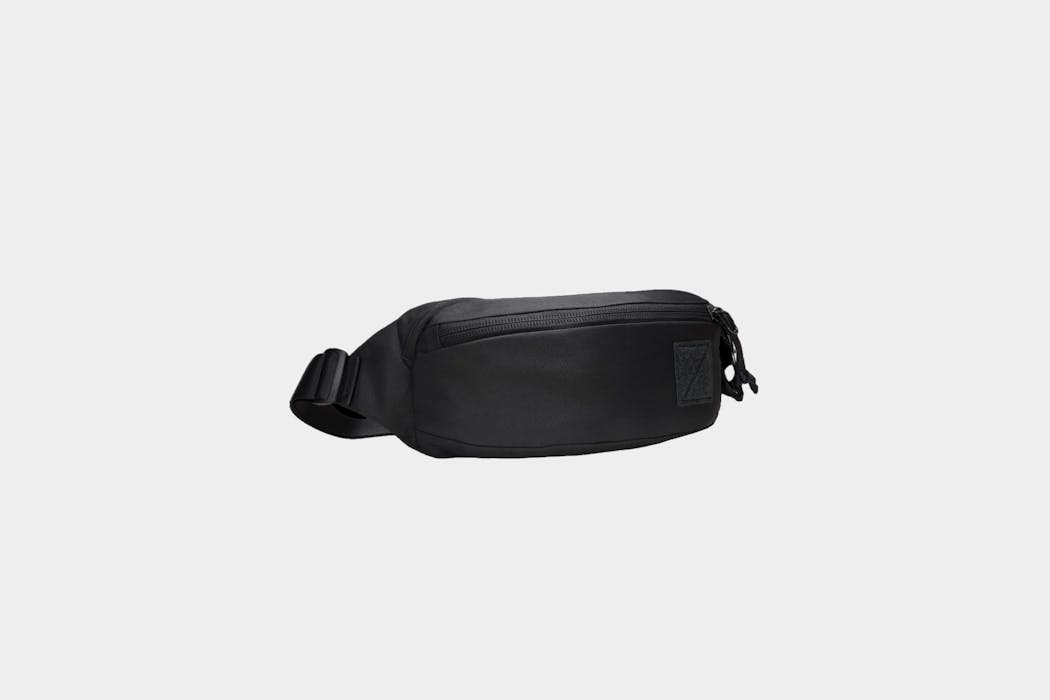

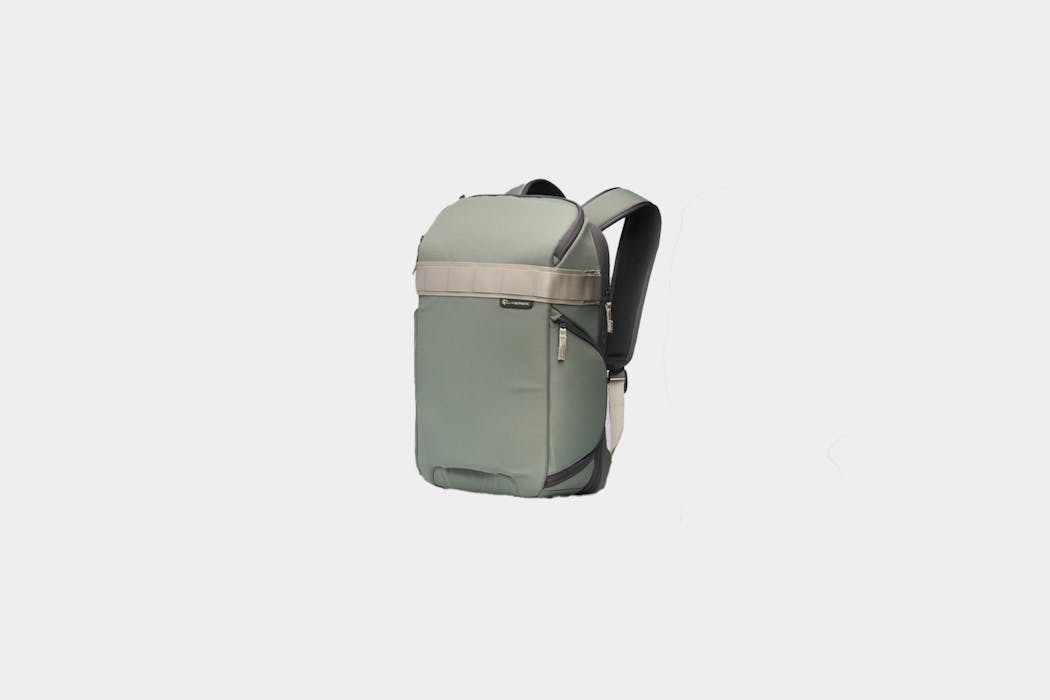
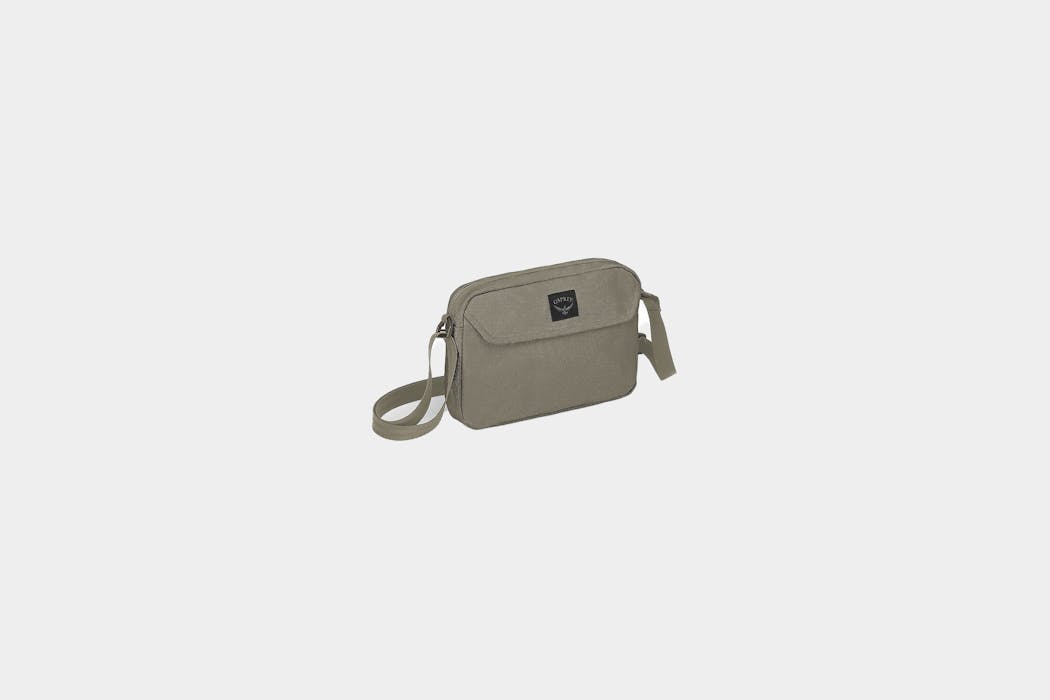
Get your questions about the Aer Day Sling 3 answered from our team and the Pro Community right here on the page. Plus, join discussions with other members about gear, guides, and more.
Join Pack Hacker Pro or, Sign In